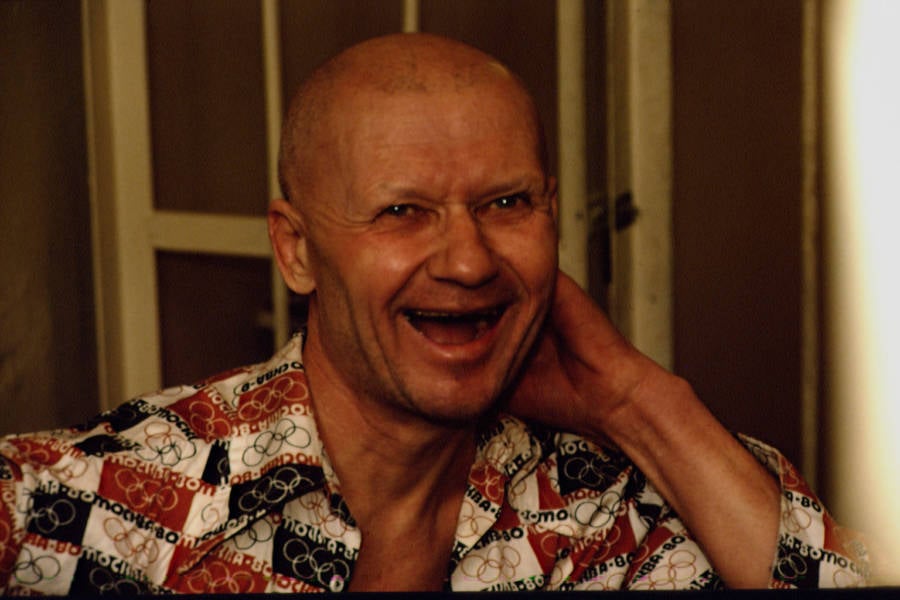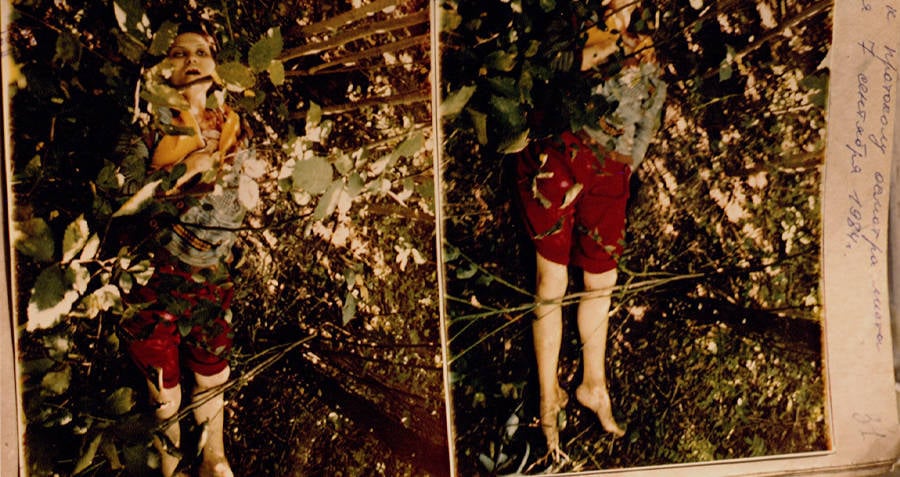Between 1978 and 1990, Andrei Chikatilo murdered at least 53 people and mutilated their bodies — all while slipping right through the authorities’ fingers on multiple occasions.
Throughout the 1980s, Soviet authorities hunted for a serial killer. The number of bodies that had turned up, all killed and mutilated in the same way, had led the police to believe it was the work of one person — a person who would likely kill again.
That person was Andrei Chikatilo, the “Red Ripper of Rostov.” Outwardly, Chikatilo appeared to be a stand-up Soviet citizen, a former military man and a devoted father of two.
But he was actually a brutal killer. After his arrest, Chikatilo quickly confessed to 56 murders that he’d committed between 1978 and 1990.

Georges DeKeerle/Sygma/Getty ImagesNotorious Ukrainian cannibalistic serial killer Andrei Chikatilo.
Andrei Chikatilo was later found guilty on 52 of the 53 murder charges and executed for his crimes. But his legacy looms large. In the years since, other serial killers have held him up as their idol.
Andrei Chikatilo’s Troubled Early Childhood
Born on October 16, 1936, in the U.S.S.R. (in present-day Ukraine), Andrei Chikatilo came of age after shortly after a widespread famine known as Holodomor. He began his life in a one-room hut, as his parents, farmers, struggled to make ends meet.
It was an unhappy and lonesome childhood with a dark shadow looming over it. Chikatilo’s mother frequently told him that he had once had an older brother — who had been taken and cannibalized by starving neighbors. The story is unverified, but it left a deep, troubling impression on Chikatilo.

Hoberman Publishing / Alamy Stock PhotoAs an adult, Andrei Chikatilo worked in three separate schools as an instructor, where he sexually assaulted several students.
As he grew up, Chikatilo’s school life proved as difficult as his home life. Small in stature and relatively week, Chikatilo was an easy target who was constantly bullied. Most of the torment he experienced came after his father was taken prisoner during World War II. Bullies frequently mocked him for his father’s “cowardice” during the war.
According to Biography, Chikatilo was further humiliated by his peers after a disturbing sexual encounter. At the age of 15, Chikatilo attempted to overpower a younger girl only to ejaculate immediately during their brief struggle.
The frequent berating he had received at the beginning of his life had turned him into an awkward and self-hating man. He attempted several relationships during his adolescence, all of which ended when he was unable to perform sexually.
“Girls were going behind my back, whispering that I was impotent,” he later recalled. “I was so ashamed. I tried to hang myself. My mother and some young neighbours pulled me out of the noose. Well, I thought no one would want such a shamed man.”
How Andrei Chikatilo Became A Killer
Despite his childhood trauma, Andrei Chikatilo had a fairly normal adulthood — at first. He completed his compulsory military service between 1957 and 1960, and joined the Communist party. Though Chikatilo struggled with impotence, his sister was able to arrange a meeting between him and woman named Fayina, who Chikatilo married in 1963. They later had two children.
Chikatilo even began taking courses in Russian literature and completed a five-year course in the subject at Rostov University. Before long, he was teaching the subject himself at a local boarding school.
Terry Smith/The LIFE Images Collection/Getty ImagesFour full-length portraits of Russian serial killer Andrei Chikatilo.
But there was darker side of Chikatilo, too. Before long, school administrators were notified that he was sexually assaulting his young students. As a result, Chikatilo moved from school to school before he was fired for good. And in 1978, he escalating from assaulting children to murdering them.
That September, the body of nine-year-old Yelena Zakotnova was discovered in the Grushevka River. She’d been stabbed and strangled. Chikatilo later confessed to killing her, but a different man, 25-year-old Alexsandr Kravchenko was found guilty and executed for the crime in 1984.
Still, Zakotnova is largely considered to be Andrei Chikatilo’s first victim. Before long, dozens more victims follow. And police would start to notice that many bore similar marks of disturbing mutilation.
The Rise And Fall Of The ‘Red Ripper Of Rostov’
From 1978 until 1990, Andrei Chikatilo continued to kill. His victims were often young, like 13-year-old Lyubov Biryuk who Chikatilo brutally murdered in 1982, and 10-year-old Olga Stalmachenok, who was stabbed and disemboweled by Chikatilo that same year, according to Ranker.
Chikatilo often found his victims at bus stops or train stations. After leading them to an isolated area, he would stab them and stuff mud in their mouths. Some had their eyes gouged out, some were disemboweled, and most were hidden with just a thin layer of leaves and dirt. Later, Chikatilo claimed that he mutilated his victims’ eyes because he was afraid his image would be imprinted after death.

Georges DeKeerle/Getty ImagesA crime scene photo of one of Andrei Chikatilo’s victims.
Investigators monitoring the alarming murders noted the mutilations and reasoned that they had a single, prolific killer on their hands. At the time, serial murders were almost unheard of in the Soviet Union (especially since such things were often suppressed by state media). But by the 1980s, they could no longer deny that there was a serial killer on the loose.
Indeed, Chikatilo would eventually claim that he’d committed 56 murders, most of them young girls, though a few of them were boys. Fifty-three of these were later verified.
Yet it took the police a few years to track Andrei Chikatilo down. In fact, he was arrested and released multiple times. His most notable release came after the police discovered his blood type did not match the semen sample they had taken from a victim. It was later discovered that Chikatilo was a “non-secretor,” meaning that his blood type could only be determined from a blood sample.
But in November 1990, shortly after he killed his final victim Sveta Korostik, Chikatilo was arrested by a patrolman who noticed his suspicious behavior. Almost twenty years after he’d begun his killing spree, the “Red Ripper of Rostov” had been caught.
The Execution Of A ‘Mad Beast’
A psychiatrist, Alexandr Bukhanovsky, who had first profiled Chikatilo as a “necro-sadist” sat down with him under the guise of trying to understand the mind of a serial killer. Chikatilo was flattered by the attention, and soon told Bukhanovsky everything that he’d done.
The police were surprised to hear how many murders that Chikatilo confessed to, as they had only suspected that he’d committed 36 murders. After his interrogation, Bukhanovsky declared that Chikatilo was fit to stand trial. At court, he was held in an iron cage to separate him from the jury, inside which he repeatedly burst into song, rambled in gibberish, and even dropped his trousers.
Despite his manic behavior, the judge declared Andrei Chikatilo guilty and sentenced him to death. On Valentine’s Day of 1994, he was executed with a single gunshot to the head, in what the judge notably referred to as “the only sentence that he deserves.”
But though Chikatilo was executed, his gruesome legacy lingered. Other Russian serial killers including Alexander Pichushkin, the “Chessboard Killer,” and serial murderer Tamara Samsonova drew inspiration from his grisly crimes.
Who knows what Chikatilo would have thought of this. As he said himself, “I am a mistake of nature, a mad beast.”